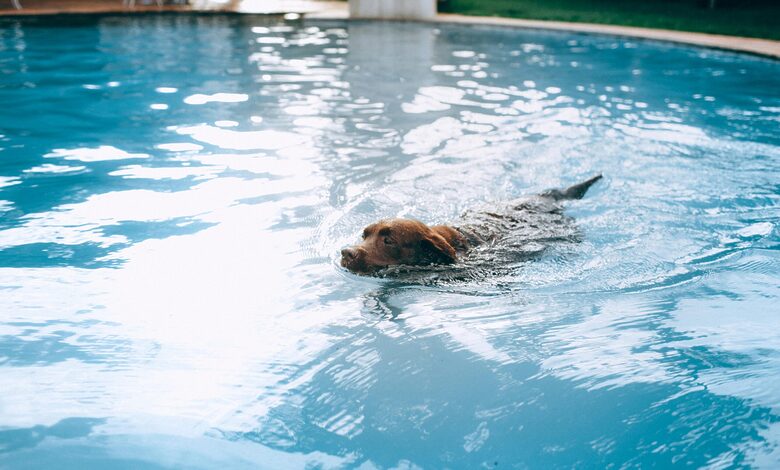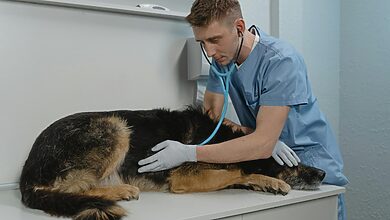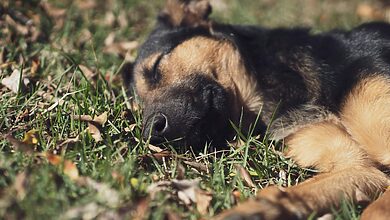Pet Rehabilitation: The Complete Guide to Transforming Your Pet’s Health and Recovery

Introduction: Why Pet Rehabilitation is Revolutionizing Animal Healthcare
Pet rehabilitation is transforming how we approach animal wellness across the United States. Moreover, this innovative field combines advanced veterinary medicine with compassionate care. As a result, millions of pets are experiencing improved quality of life.
Furthermore, pet rehabilitation offers hope where traditional treatments fall short. In fact, this specialized therapy helps pets recover faster from injuries. Additionally, it provides long-term solutions for chronic conditions.
According to recent studies from the American Veterinary Medical Association, over 85% of pets show significant improvement with rehabilitation therapy. Therefore, understanding this field is crucial for every pet parent.
Understanding Pet Rehabilitation: The Foundation of Modern Animal Therapy
What is Pet Rehabilitation?
Pet rehabilitation, also known as animal physical therapy, represents a holistic approach to animal wellness. Specifically, it focuses on restoring function and managing pain naturally. Moreover, this therapy optimizes your pet’s natural healing capabilities.
Unlike traditional veterinary care, rehabilitation treats the whole animal. Consequently, it addresses not just the injury site but compensatory issues too. Therefore, your pet receives comprehensive care that promotes lasting recovery.
The Core Philosophy: Treating the Whole Pet
The philosophy of pet rehabilitation centers on functional restoration. When your pet injures one leg, for instance, they naturally shift weight to other limbs. Subsequently, this creates strain on their back, neck, and remaining legs.
Without intervention, muscle atrophy develops in the injured limb. Meanwhile, overuse pain emerges in compensating areas. As a result, a cycle of dysfunction and discomfort begins.
Pet rehabilitation breaks this harmful cycle through targeted interventions. Specifically, certified therapists address each component of dysfunction. Therefore, your pet recovers more completely and comfortably.
Key Benefits of Pet Rehabilitation Programs
Immediate Recovery Benefits
Pet rehabilitation provides numerous immediate advantages for recovering pets. First, it significantly reduces acute and chronic pain levels. Additionally, therapy accelerates healing after surgical procedures.
Furthermore, rehabilitation maintains normal joint range of motion. This prevents stiffness and contractures from developing. As a result, your pet maintains flexibility throughout recovery.
According to the American Association of Rehabilitation Veterinarians, pets receiving therapy recover 40% faster than those without. Therefore, investing in rehabilitation saves time and reduces suffering.
Long-Term Health Improvements
Beyond immediate recovery, pet rehabilitation offers lasting benefits. Most importantly, it rebuilds lost muscle mass and strength systematically. Additionally, therapy improves balance, coordination, and body awareness.
Moreover, rehabilitation provides safe fitness and weight management options. This is particularly crucial for higher weight pets with joint issues. Consequently, your pet maintains optimal health throughout their lifetime.
Furthermore, consistent therapy reduces reliance on pain medications. This decreases potential side effects while maintaining comfort levels. Therefore, your pet enjoys better overall health naturally.
Comprehensive Candidate Assessment: Who Benefits from Pet Rehabilitation?
Post-Surgical Recovery Candidates
Post-orthopedic surgery represents the primary application of pet rehabilitation. Specifically, procedures like Tibial Plateau Leveling Osteotomy (TPLO) require structured recovery programs. Additionally, fracture repairs and joint replacements benefit significantly from therapy.
Initially, rehabilitation focuses on pain and inflammation control. Therapists use cryotherapy and laser treatments during early stages. Subsequently, gentle weight-bearing exercises begin in controlled environments.
As healing progresses, underwater treadmill sessions start carefully. Meanwhile, passive range-of-motion exercises prevent joint stiffening. Finally, challenging strengthening exercises rebuild powerful supporting muscles.
Arthritis and Joint Disease Management
Millions of American pets suffer from osteoarthritis and degenerative joint disease. Unfortunately, arthritis pain leads to decreased activity levels. Consequently, muscles weaken and provide less joint support.
This creates a destructive cycle of instability and increased pain. However, pet rehabilitation effectively breaks this pattern. Low-impact exercises like swimming build muscle without stressing joints.
Additionally, manual therapies and massage address pain directly. Laser therapy reduces inflammation while maintaining comfort. Therefore, arthritic pets remain active and comfortable longer.
Neurological Condition Support
Pets with spinal cord injuries require specialized rehabilitation approaches. Intervertebral Disc Disease (IVDD) is particularly common in certain breeds. Moreover, degenerative nerve conditions benefit from targeted therapy programs.
Rehabilitation retrains the nervous system through specific exercises. Navigation patterns and obstacle courses strengthen neural pathways. This process, called neuroplasticity, promotes functional recovery.
For paralyzed patients, therapy maintains joint health and prevents complications. Additionally, therapists fit and adapt assistive mobility devices. Therefore, even severely affected pets maintain quality of life.
Senior Pet Wellness Programs
Geriatric pets naturally experience muscle loss and increased stiffness. This condition, called sarcopenia, affects mobility and independence. However, gentle rehabilitation programs significantly improve senior pet wellness.
Simple balance exercises help prevent dangerous falls. Meanwhile, strengthening activities maintain functional mobility. Additionally, modalities like massage provide comfort and pain relief.
According to the American Animal Hospital Association, senior pets in rehabilitation programs maintain independence 60% longer. Therefore, your aging companion enjoys their golden years with dignity.
Athletic and Working Dog Conditioning
High-performance canines require specialized conditioning programs. Just like human athletes, these dogs benefit from injury prevention protocols. Additionally, performance optimization programs enhance competitive abilities.
Rehabilitation professionals analyze specific movement patterns in detail. Subsequently, they create targeted fitness plans addressing core strength. Endurance and flexibility training complement strength development.
Therefore, athletic dogs maintain longer, healthier careers. Moreover, working dogs perform their duties more effectively and safely. This investment in conditioning pays dividends throughout their working life.
Advanced Rehabilitation Modalities: The Therapist’s Complete Toolkit
Hydrotherapy: Water-Based Healing
Hydrotherapy represents a cornerstone of modern pet rehabilitation. The therapeutic use of water provides unique benefits unavailable through land-based exercises. Moreover, water’s properties create ideal conditions for healing and strengthening.
Underwater Treadmill Therapy
The underwater treadmill serves as the workhorse of rehabilitation centers nationwide. Pets walk on a moving belt within a temperature-controlled water tank. Meanwhile, water resistance provides excellent muscle-building workout opportunities.
Water depth adjustments control weight-bearing forces precisely. Shallow water allows partial weight bearing during early recovery. Conversely, deeper water reduces joint stress for arthritic patients.
Additionally, water temperature promotes muscle relaxation and increased circulation. Warm water (approximately 83-88°F) provides optimal therapeutic conditions. Therefore, pets experience comfort while building strength simultaneously.
Therapeutic Swimming Programs
Swimming offers exceptional non-weight-bearing exercise opportunities. This modality is ideal for building cardiovascular fitness safely. Additionally, swimming improves range of motion in all four limbs.
Swimming is particularly beneficial for pets unable to bear weight on injured limbs. The water supports their body weight completely. Meanwhile, natural swimming motions promote muscle development and coordination.
Furthermore, swimming provides mental stimulation and enjoyment for many pets. This psychological benefit enhances overall treatment compliance. Therefore, pets look forward to their therapy sessions enthusiastically.
Laser Therapy: Advanced Light-Based Healing
Therapeutic laser therapy, also called photobiomodulation, uses specific light wavelengths for healing. These precisely calibrated lights penetrate deep into tissues safely. Moreover, laser therapy works at the cellular level to promote recovery.
The treatment stimulates cellular energy production significantly. This dramatically reduces inflammation throughout treated areas. Additionally, laser therapy accelerates healing in skin, muscle, and tendon tissues.
According to research from Colorado State University Veterinary Teaching Hospital, laser therapy reduces healing time by 35%. Most importantly, treatments are completely painless and often soothing for pets.
Manual Therapy Techniques
Manual therapies represent crucial hands-on treatment components. These techniques require extensive training and certification. Moreover, skilled therapists adapt treatments to each pet’s specific needs.
Joint Mobilization Protocols
Joint mobilization involves gentle, controlled movements applied to specific joints. These techniques restore normal joint mechanics effectively. Additionally, mobilization reduces stiffness and relieves associated pain.
Therapists use precise pressure and movement patterns during treatments. Each joint receives individualized attention based on assessment findings. Therefore, treatment addresses specific dysfunction patterns accurately.
Furthermore, joint mobilization improves synovial fluid circulation. This natural lubrication enhances joint nutrition and waste removal. Consequently, joints function more smoothly and comfortably.
Therapeutic Massage Applications
Therapeutic massage provides numerous benefits beyond simple relaxation. Specifically, massage improves circulation to affected areas. Additionally, it reduces muscle tension and promotes flexibility.
Massage techniques vary based on treatment goals and pet tolerance. Gentle effleurage strokes promote relaxation and circulation. Meanwhile, deeper techniques address specific muscle dysfunction.
Moreover, massage strengthens the human-animal bond during treatment. This emotional connection enhances treatment compliance significantly. Therefore, pets often find massage sessions particularly enjoyable.
Exercise Therapy Programs
Therapeutic exercises form the foundation of successful rehabilitation programs. Each exercise targets specific weaknesses and instabilities identified during assessment. Moreover, exercise progression follows scientific principles of tissue healing.
Strengthening Exercise Protocols
Strengthening exercises rebuild muscle mass lost during inactivity. Controlled “sit-to-stand” repetitions target hind-limb muscles specifically. Additionally, step-ups and incline walking challenge different muscle groups.
Balance exercises using unstable surfaces enhance proprioception. Cavaletti rails encourage higher stepping patterns and coordination. Meanwhile, core strengthening exercises improve overall stability.
Exercise intensity increases gradually based on patient response. This progressive approach prevents re-injury while maximizing benefits. Therefore, pets build strength safely and effectively.
Flexibility and Range of Motion Work
Flexibility exercises maintain and improve joint mobility. Passive range of motion prevents contracture development during healing. Additionally, active stretching promotes tissue extensibility.
Daily stretching routines become part of home exercise programs. Owners learn safe techniques for maintaining joint flexibility. Therefore, progress continues between professional therapy sessions.
Furthermore, flexibility work prepares tissues for strengthening activities. Warm, flexible tissues respond better to exercise challenges. Consequently, the risk of exercise-related injury decreases significantly.
Electrical Stimulation Therapies
Neuromuscular electrical stimulation (NMES) addresses severe muscle atrophy and nerve damage. Electrodes placed on the skin deliver gentle electrical currents. These currents cause controlled muscle contractions.
NMES re-educates muscles that cannot contract voluntarily. Additionally, stimulation improves blood flow to affected areas. This enhanced circulation supports tissue healing and prevents further atrophy.
For pets with nerve damage, electrical stimulation maintains muscle mass during recovery. This prevents irreversible muscle loss while nerves heal. Therefore, functional recovery potential is preserved.
Shockwave Therapy Applications
Extracorporeal shockwave therapy (ESWT) treats chronic conditions effectively. High-energy sound waves stimulate the body’s natural repair mechanisms. Moreover, shockwave therapy promotes new blood vessel formation.
This modality is particularly effective for non-healing fractures. Additionally, chronic tendonitis and severe arthritis respond well to treatment. Shockwave therapy reduces chronic inflammation while promoting healing.
According to studies from the Veterinary Information Network, shockwave therapy improves chronic conditions in 78% of cases. Treatment is non-invasive and typically well-tolerated by pets.
Temperature Therapy Protocols
Cryotherapy and thermotherapy remain fundamental rehabilitation components. Strategic use of cold and heat enhances treatment effectiveness. Moreover, temperature therapy is easily applied at home.
Cryotherapy Applications
Ice therapy constricts blood vessels and reduces swelling effectively. Cold applications are crucial for acute injuries. Additionally, post-exercise ice therapy prevents excessive inflammation.
Cryotherapy sessions typically last 10-15 minutes per application. Multiple daily sessions may be recommended initially. However, excessive cold exposure can damage tissues, so timing is critical.
Furthermore, ice therapy provides significant pain relief. This allows pets to rest more comfortably during healing. Therefore, overall recovery quality improves substantially.
Heat Therapy Benefits
Heat therapy increases blood flow and tissue elasticity. Warm applications are ideal for chronic conditions. Additionally, pre-exercise heat therapy prepares stiff joints for activity.
Heat therapy promotes muscle relaxation and pain relief. This is particularly beneficial for arthritic pets. Moreover, warmth often provides psychological comfort as well.
Temperature should be comfortable to human touch to prevent burns. Heat therapy sessions typically last 15-20 minutes. Therefore, this safe modality provides significant therapeutic benefits.
The Rehabilitation Journey: From Assessment to Recovery
Comprehensive Initial Evaluation
The rehabilitation journey begins with an extensive initial evaluation. This comprehensive assessment typically requires 60-90 minutes. During this time, therapists gather crucial information about your pet’s condition.
The evaluation includes a complete physical examination. Gait analysis reveals movement compensations and abnormalities. Additionally, therapists take precise joint angle measurements using specialized tools.
Muscle mass measurements establish baseline values for tracking progress. Range of motion testing identifies restrictions and painful areas. Furthermore, functional assessments reveal daily activity limitations.
Treatment Plan Development
Following evaluation, therapists develop individualized treatment plans. These plans address specific impairments identified during assessment. Moreover, treatment goals align with owner expectations and pet capabilities.
Short-term goals focus on pain reduction and inflammation control. Medium-term objectives include strength building and flexibility improvement. Long-term goals emphasize functional restoration and injury prevention.
Treatment frequency typically ranges from one to three sessions weekly. Session duration varies based on pet tolerance and treatment complexity. Additionally, plans include detailed home exercise programs.
Progress Monitoring and Plan Adjustments
Regular reassessments track treatment progress objectively. Muscle measurements, range of motion testing, and functional assessments are repeated. These measurements guide treatment plan modifications.
Successful programs show steady improvement in measured parameters. Additionally, owners report enhanced activity levels and reduced pain behaviors. Functional improvements translate to better quality of life.
Treatment plans are adjusted based on progress rates and changing needs. Some pets advance quickly and require more challenging exercises. Others need longer periods at each level before progressing.
Home Exercise Programs: The Key to Success
Owner Education and Training
Home exercise programs represent the most critical component of successful rehabilitation. Owner compliance with prescribed exercises is the greatest predictor of positive outcomes. Therefore, thorough education is essential for treatment success.
Therapists teach owners safe, effective exercise techniques during sessions. Detailed written instructions accompany verbal demonstrations. Additionally, video recordings may document proper technique for home reference.
Owner understanding is verified through return demonstrations. This ensures exercises are performed correctly and safely. Moreover, owners learn to recognize signs of fatigue or discomfort.
Exercise Progression Protocols
Home exercises follow specific progression protocols. Initial exercises focus on gentle movement and pain relief. Subsequently, strengthening and endurance components are added gradually.
Exercise frequency and duration increase systematically over time. This progressive approach prevents overexertion and re-injury. Additionally, variety prevents boredom and maintains motivation.
Owners receive clear guidelines about exercise advancement. Warning signs indicating the need to decrease intensity are explained thoroughly. Therefore, home programs remain safe and effective.
Compliance Strategies and Support
Maintaining long-term exercise compliance can be challenging. Therefore, therapists provide ongoing support and motivation. Regular check-ins address concerns and maintain momentum.
Exercise logs help track compliance and progress. Visual progress markers encourage continued participation. Additionally, family involvement increases success rates significantly.
Therapists adjust home programs based on compliance feedback. Overly complex routines are simplified when necessary. Meanwhile, highly compliant owners may receive more challenging protocols.
Cost Considerations and Insurance Coverage
Treatment Cost Factors
Pet rehabilitation costs vary based on multiple factors. Treatment complexity, session frequency, and geographic location influence pricing. Additionally, specialized equipment usage affects individual session costs.
Initial evaluations typically cost more than follow-up sessions. Comprehensive assessments require significant time and expertise. However, this investment ensures appropriate treatment planning.
Home exercise programs provide excellent value for rehabilitation investment. Daily exercises reinforce professional treatments at minimal cost. Therefore, committed owners maximize their rehabilitation investment.
Insurance Coverage Options
Pet insurance coverage for rehabilitation varies significantly between providers. Some policies include rehabilitation as standard coverage. Others offer it as optional add-on coverage.
Pre-existing conditions may not be covered by insurance policies. Therefore, early enrollment in pet insurance is advisable. Additionally, documentation of preventive care supports coverage claims.
Many rehabilitation centers offer payment plans for uninsured treatments. These arrangements make therapy accessible to more pet families. Moreover, the investment in rehabilitation often reduces long-term medical costs.

Choosing the Right Rehabilitation Provider
Certification and Credentials
Selecting qualified rehabilitation providers is crucial for treatment success. Look for practitioners with proper certification credentials. The Canine Rehabilitation Institute provides recognized certification programs.
Additionally, many physical therapists pursue veterinary rehabilitation specialization. These professionals bring human rehabilitation expertise to animal patients. Therefore, dual training provides comprehensive treatment perspectives.
Veterinary technicians may also obtain rehabilitation certification. These professionals work under veterinary supervision. Moreover, their animal handling experience enhances treatment safety and effectiveness.
Facility Equipment and Capabilities
Modern rehabilitation facilities offer comprehensive treatment capabilities. Underwater treadmills, therapeutic pools, and laser therapy systems are standard equipment. Additionally, facilities should maintain strict safety and sanitation protocols.
Equipment maintenance and calibration ensure treatment effectiveness. Modern facilities invest in the latest rehabilitation technologies. Therefore, pets receive optimal treatment opportunities.
Furthermore, facility design should accommodate pets of all sizes comfortably. Separate areas for different activities enhance treatment efficiency. Quiet spaces reduce stress for anxious patients.
Treatment Philosophy and Approach
Rehabilitation providers should demonstrate compassionate, patient-centered care. Treatment approaches should be evidence-based and individualized. Moreover, providers should communicate clearly about treatment expectations.
Successful providers involve owners as active participants in recovery. They provide thorough education and ongoing support. Additionally, they adjust treatments based on patient response and owner feedback.
Furthermore, reputable providers maintain continuing education. They stay current with the latest rehabilitation techniques and research. Therefore, pets receive the most advanced care available.
Frequently Asked Questions About Pet Rehabilitation
1. How long does pet rehabilitation typically take?
Pet rehabilitation duration varies significantly based on multiple factors. The type and severity of injury or condition influence timeline expectations. Additionally, pet age, overall health, and owner compliance affect recovery speed.
Generally, post-surgical rehabilitation lasts 8-16 weeks. Chronic conditions like arthritis require ongoing management. However, most pets show improvement within 2-4 weeks of starting therapy.
Owner dedication to home exercise programs significantly impacts recovery time. Compliant owners often see faster, more complete recoveries. Therefore, commitment to the full program is essential for optimal results.
2. Is pet rehabilitation painful for my pet?
Properly administered pet rehabilitation should not cause significant pain. In fact, most modalities are designed to reduce pain and improve comfort. However, some mild discomfort may occur as muscles strengthen and flexibility improves.
Therapists monitor pets closely for signs of discomfort during treatments. Treatment intensity is adjusted based on patient response. Additionally, pain management strategies are integrated into treatment plans.
Most pets actually enjoy their rehabilitation sessions. The attention, gentle handling, and often swimming activities are pleasurable. Therefore, pets typically look forward to their appointments.
3. Can older pets benefit from rehabilitation therapy?
Senior pets often experience the greatest benefits from rehabilitation therapy. Age-related muscle loss and joint stiffness respond well to appropriate treatment. Moreover, gentle exercises help maintain mobility and independence.
Rehabilitation programs for senior pets focus on comfort and function. Activities are modified to match energy levels and physical capabilities. Additionally, pain management receives particular attention in geriatric patients.
Many senior pets experience renewed vitality through rehabilitation programs. Improved mobility leads to increased activity and better quality of life. Therefore, age should not be a barrier to pursuing therapy.
4. What should I expect during my pet’s first rehabilitation visit?
The initial rehabilitation visit involves a comprehensive evaluation. This assessment typically lasts 60-90 minutes. During this time, therapists gather detailed information about your pet’s condition and history.
The evaluation includes physical examination, gait analysis, and functional testing. Measurements of joint angles and muscle mass establish baseline values. Additionally, treatment goals are discussed with owners.
Following evaluation, an initial treatment may be provided. This allows your pet to experience rehabilitation modalities safely. Moreover, you’ll receive detailed home exercise instructions and follow-up scheduling.
5. How often will my pet need rehabilitation sessions?
Rehabilitation session frequency depends on several factors. The condition being treated, severity of impairment, and treatment goals influence scheduling. Additionally, pet tolerance and owner availability affect frequency decisions.
Typically, sessions are scheduled 1-3 times per week initially. As pets improve, session frequency may decrease. However, some chronic conditions benefit from ongoing maintenance sessions.
Home exercise programs complement professional sessions. Daily exercises reinforce improvements made during therapy visits. Therefore, the combination of professional and home treatment maximizes results.
6. Can I perform rehabilitation exercises at home?
Home exercise programs are essential components of successful rehabilitation. Owners are taught safe, effective exercises during professional sessions. Additionally, detailed instructions ensure proper technique and safety.
However, professional guidance is crucial for exercise prescription and progression. Therapists modify programs based on patient response and improvement. Moreover, they ensure exercises remain appropriate and safe.
Some advanced techniques require professional administration. Underwater treadmill therapy and electrical stimulation need specialized equipment. Therefore, home programs complement but don’t replace professional treatment.
7. Will my pet need rehabilitation after every surgery?
Not all surgical procedures require formal rehabilitation programs. However, most orthopedic surgeries benefit significantly from structured therapy. Additionally, complex or extensive surgeries typically need rehabilitation support.
Your veterinary surgeon will recommend rehabilitation when appropriate. Factors like procedure type, expected recovery challenges, and pet characteristics influence recommendations. Moreover, early intervention often prevents complications.
Even minor procedures may benefit from basic home exercises. Simple activities can maintain mobility during healing. Therefore, discuss rehabilitation options with your veterinary team for any surgical procedure.
8. What equipment is needed for home rehabilitation exercises?
Most home rehabilitation exercises require minimal special equipment. Basic items like non-slip mats, small obstacles, and balance discs are commonly used. Additionally, household items often substitute for specialized equipment.
Therapists recommend specific equipment based on prescribed exercises. They also suggest budget-friendly alternatives when possible. Moreover, equipment needs typically increase gradually as programs advance.
Some advanced home programs may require specialized items. Underwater treadmill alternatives or electrical stimulation units represent significant investments. However, these are prescribed only when specifically beneficial.
9. How do I know if rehabilitation is working for my pet?
Progress in pet rehabilitation is measured through multiple indicators. Objective measurements like increased muscle mass and joint flexibility demonstrate improvement. Additionally, functional assessments reveal enhanced mobility and strength.
Owner observations provide valuable progress information. Increased activity levels, improved appetite, and better sleep patterns indicate success. Moreover, reduced pain behaviors suggest enhanced comfort.
Regular reassessments with rehabilitation therapists track progress systematically. These evaluations compare current status to baseline measurements. Therefore, progress can be documented objectively over time.
10. What are the risks associated with pet rehabilitation?
Properly administered pet rehabilitation carries minimal risks. However, overexertion or inappropriate exercises could potentially cause setbacks. Additionally, underlying health conditions may influence treatment safety.
Qualified rehabilitation providers minimize risks through careful assessment and monitoring. Treatment intensity is adjusted based on patient response. Moreover, safety protocols prevent injury during therapy sessions.
The greatest risk is often delaying or avoiding rehabilitation when it’s needed. Untreated conditions typically worsen over time. Therefore, the benefits of appropriate rehabilitation far outweigh the minimal risks involved.
Conclusion: Embracing Pet Rehabilitation for Your Companion’s Best Life
Pet rehabilitation represents a revolutionary approach to animal healthcare. This comprehensive therapy addresses the root causes of dysfunction while promoting natural healing. Moreover, rehabilitation provides hope for pets facing challenging conditions.
The evidence supporting pet rehabilitation continues to grow. Research demonstrates significant improvements in pain, function, and quality of life. Additionally, rehabilitation often reduces the need for medications and invasive procedures.
As pet parents, we owe our companions the best possible care. Pet rehabilitation offers that opportunity through scientifically-based, compassionate treatment. Furthermore, the strong partnership between owners, pets, and rehabilitation professionals creates optimal outcomes.
Consider pet rehabilitation as an investment in your companion’s health and happiness. Whether recovering from surgery, managing arthritis, or optimizing athletic performance, rehabilitation can help. Therefore, discuss these options with your veterinary team today.
Your pet’s journey to better health begins with a single step. Take that step toward pet rehabilitation and discover the transformative power of comprehensive therapy. Together, we can help your beloved companion live their best, most comfortable life.








